Growing Kale in Bottles: Sounds a little unconventional, right? But trust me, it’s a game-changer! Are you dreaming of fresh, vibrant kale but lack the space, or maybe you’re battling pesky garden critters? Well, you’re in the right place. This DIY guide will unlock a surprisingly simple and effective method for cultivating your own kale, even if you only have a balcony or a sunny windowsill.
While container gardening has been around for centuries, with evidence dating back to ancient Egypt and Rome, the modern twist of using recycled bottles adds an eco-conscious element to this time-honored practice. Think of it – you’re not only growing your own nutritious greens, but you’re also repurposing materials and reducing waste! It’s a win-win.
Let’s face it, buying organic kale at the grocery store can be expensive, and sometimes the quality isn’t the best. Plus, there’s nothing quite like the satisfaction of harvesting your own food. This DIY project for growing kale in bottles offers a cost-effective, space-saving, and environmentally friendly solution. I’m going to show you how to create a thriving vertical garden that will provide you with a continuous supply of fresh, delicious kale. Get ready to ditch the store-bought stuff and embrace the joy of homegrown goodness!
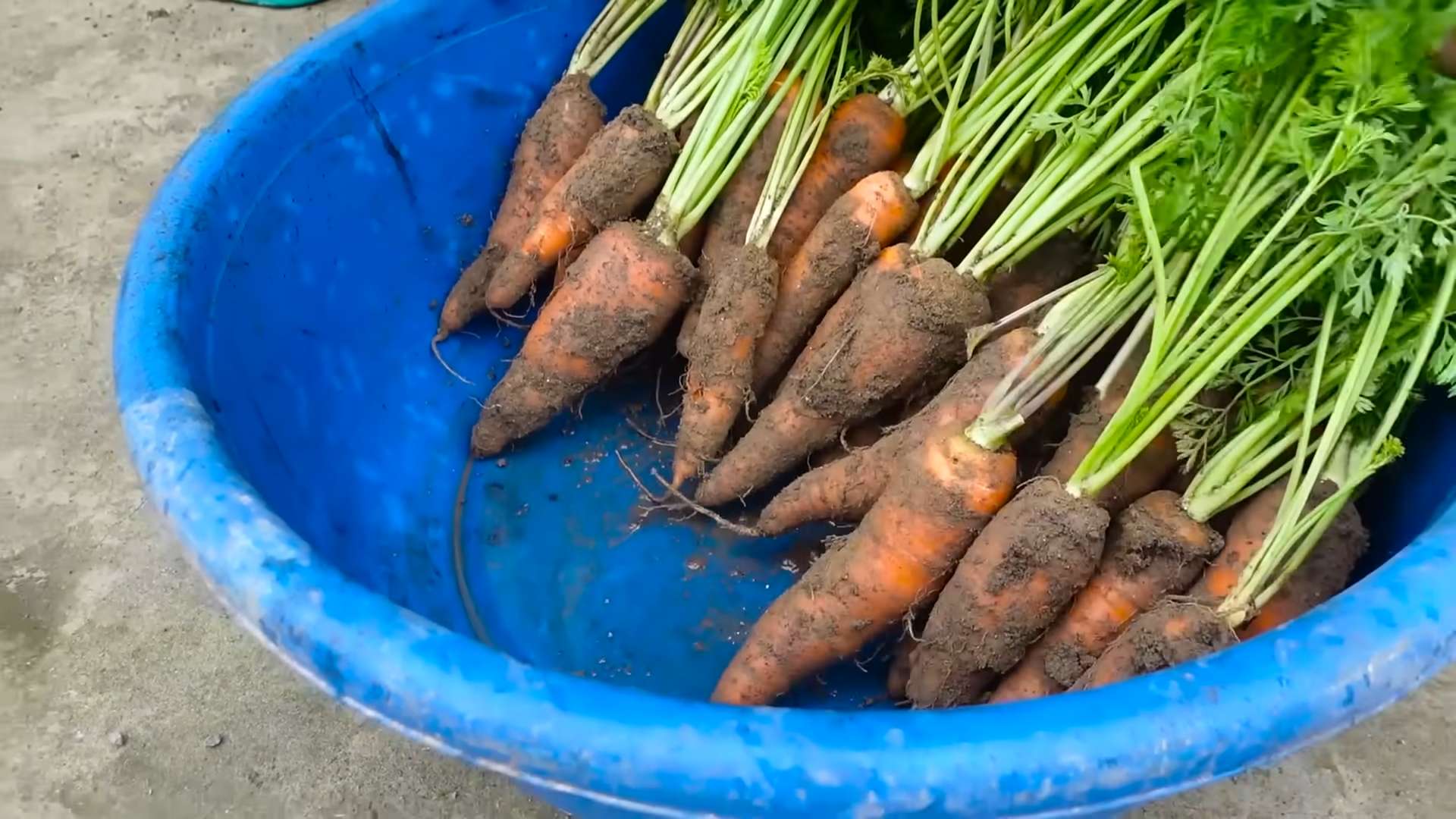
Growing Kale in Bottles: A Fun and Space-Saving DIY Project
Hey there, fellow gardening enthusiasts! Are you short on space but still dreaming of fresh, homegrown kale? Well, I’ve got the perfect solution for you: growing kale in bottles! It’s a fantastic way to recycle, save space, and enjoy delicious, nutritious greens right at your fingertips. I’ve been doing this for a while now, and I’m excited to share my step-by-step guide with you. Let’s get started!
What You’ll Need
Before we dive in, let’s gather all the necessary materials. Trust me, having everything ready beforehand will make the process much smoother.
* Plastic Bottles: I usually use 2-liter soda bottles or larger water bottles. The bigger, the better, as it gives the kale roots more room to grow. Make sure they’re clean and free of any residue.
* Kale Seeds or Seedlings: You can start from seeds or buy small kale seedlings from your local nursery. I’ve had success with both, but seedlings will give you a head start.
* Potting Mix: Use a good quality potting mix that’s well-draining. Avoid using garden soil, as it can become compacted in the bottles.
* Scissors or a Utility Knife: For cutting the bottles. Be careful!
* Drill or Nail: To create drainage holes.
* Water: For watering your kale.
* Optional:
* Liquid Fertilizer: To give your kale a boost.
* Gravel or Small Stones: For drainage at the bottom of the bottles.
* Gloves: To keep your hands clean.
* Labels: To mark the type of kale you’re growing.
Preparing the Bottles
This is where we transform those empty bottles into mini kale gardens!
1. Clean the Bottles: Thoroughly wash the bottles with soap and water to remove any leftover residue. Rinse them well and let them dry completely. This is crucial to prevent any contamination that could harm your kale.
2. Cut the Bottles: Decide how you want to cut the bottles. There are a few options:
* Option 1: Horizontal Cut: Cut the bottle horizontally about two-thirds of the way up from the bottom. This creates a wider opening for planting and harvesting. I find this method works best for larger kale varieties.
* Option 2: Vertical Cut: Cut the bottle vertically down one side, creating a flap that you can open and close. This is a good option if you want to monitor the soil moisture more easily.
* Option 3: Hanging Planter: Cut the bottle in half horizontally. Invert the top half and place it inside the bottom half, creating a self-watering planter. You’ll need to drill a hole in the bottle cap for the water to wick up. This is a more advanced method, but it can be very effective.
I usually go with Option 1 because it’s simple and provides ample space for the kale to grow. Use your scissors or utility knife carefully to make the cut.
3. Create Drainage Holes: This is super important! Kale needs good drainage to prevent root rot. Use a drill or nail to create several drainage holes in the bottom of the bottle. I usually make about 5-6 holes, evenly spaced.
4. Add Drainage Layer (Optional): To further improve drainage, you can add a layer of gravel or small stones to the bottom of the bottle. This helps prevent the potting mix from clogging the drainage holes. I usually add about an inch of gravel.
Planting Your Kale
Now for the fun part – planting the kale!
1. Fill with Potting Mix: Fill the bottle with potting mix, leaving about an inch of space at the top. Gently pat down the soil to remove any air pockets.
2. Plant the Seeds or Seedlings:
* From Seeds: Sow the kale seeds according to the package instructions. I usually plant a few seeds per bottle and then thin them out later, keeping the strongest seedling. Cover the seeds with a thin layer of potting mix and gently water.
* From Seedlings: Carefully remove the kale seedlings from their containers. Gently loosen the roots and plant them in the bottle, making sure the top of the root ball is level with the soil surface. Water thoroughly.
3. Label Your Bottles: If you’re growing different varieties of kale, label each bottle so you know which is which. I use a permanent marker to write the name of the kale on a piece of tape and stick it to the bottle.
Caring for Your Kale
Now that your kale is planted, it’s time to provide it with the care it needs to thrive.
1. Watering: Kale needs consistent moisture, but it doesn’t like to be waterlogged. Water your kale when the top inch of soil feels dry to the touch. Avoid overwatering, as this can lead to root rot. I usually water every 2-3 days, depending on the weather.
2. Sunlight: Kale needs at least 6 hours of sunlight per day. Place your bottles in a sunny location, such as a windowsill, balcony, or patio. If you don’t have enough natural light, you can supplement with a grow light.
3. Fertilizing: Kale is a heavy feeder, so it benefits from regular fertilization. I use a liquid fertilizer diluted to half strength every 2-3 weeks. You can also use a slow-release fertilizer at planting time.
4. Pest Control: Keep an eye out for pests such as aphids, cabbage worms, and slugs. If you spot any pests, you can try hand-picking them off or using an organic insecticide. I’ve found that a strong spray of water can often dislodge aphids.
5. Pruning: As your kale grows, you can prune off any yellowing or damaged leaves. This will encourage new growth and keep your plants healthy.
Harvesting Your Kale
The best part – enjoying the fruits (or rather, leaves!) of your labor!
1. When to Harvest: You can start harvesting kale leaves when they are about 4-6 inches long. I usually harvest the outer leaves first, leaving the inner leaves to continue growing.
2. How to Harvest: Use scissors or a knife to cut the leaves off at the base of the stem. Avoid pulling the leaves off, as this can damage the plant.
3. Enjoy Your Harvest: Wash the kale leaves thoroughly and enjoy them in salads, smoothies, soups, or stir-fries. Freshly harvested kale is incredibly delicious and nutritious!
Troubleshooting
Even with the best care, you might encounter some challenges along the way. Here are a few common problems and how to address them:
* Yellowing Leaves: This could be a sign of overwatering, underwatering, or nutrient deficiency. Check the soil moisture and adjust your watering accordingly. If the soil is dry, water more frequently. If the soil is soggy, water less frequently. You may also need to fertilize your kale.
* Leggy Growth: This means your kale isn’t getting enough sunlight. Move your bottles to a sunnier location or supplement with a grow light.
* Pest Infestation: As mentioned earlier, keep an eye out for pests and take action promptly.
* Slow Growth: This could be due to poor soil, lack of nutrients, or insufficient sunlight. Make sure you’re using a good quality potting mix, fertilizing regularly, and providing enough sunlight.
Tips and Tricks
Here are a few extra tips and tricks I’ve learned along the way:
* Rotate Your Bottles: To ensure even growth, rotate your bottles regularly so that all sides get equal sunlight.
* Succession Planting: Plant new seeds or seedlings every few weeks to ensure a continuous harvest.
* Choose the Right Variety: Some kale varieties are better suited for container gardening than others. I’ve had good luck with Dwarf Blue Curled Vates and Red Russian kale.
* Don’t Overcrowd: Avoid planting too many kale plants in one bottle. Overcrowding can lead to stunted growth and increased susceptibility to pests and diseases.
* Recycle and Reuse: Once you’re done with your kale plants, you can compost the old potting mix and reuse the bottles for another planting.
Growing kale in bottles is a rewarding and sustainable way to enjoy fresh, homegrown greens. With a little bit of effort and attention, you can have a thriving kale garden right at your fingertips. So, grab some bottles, seeds, and potting mix, and get started today! Happy gardening!
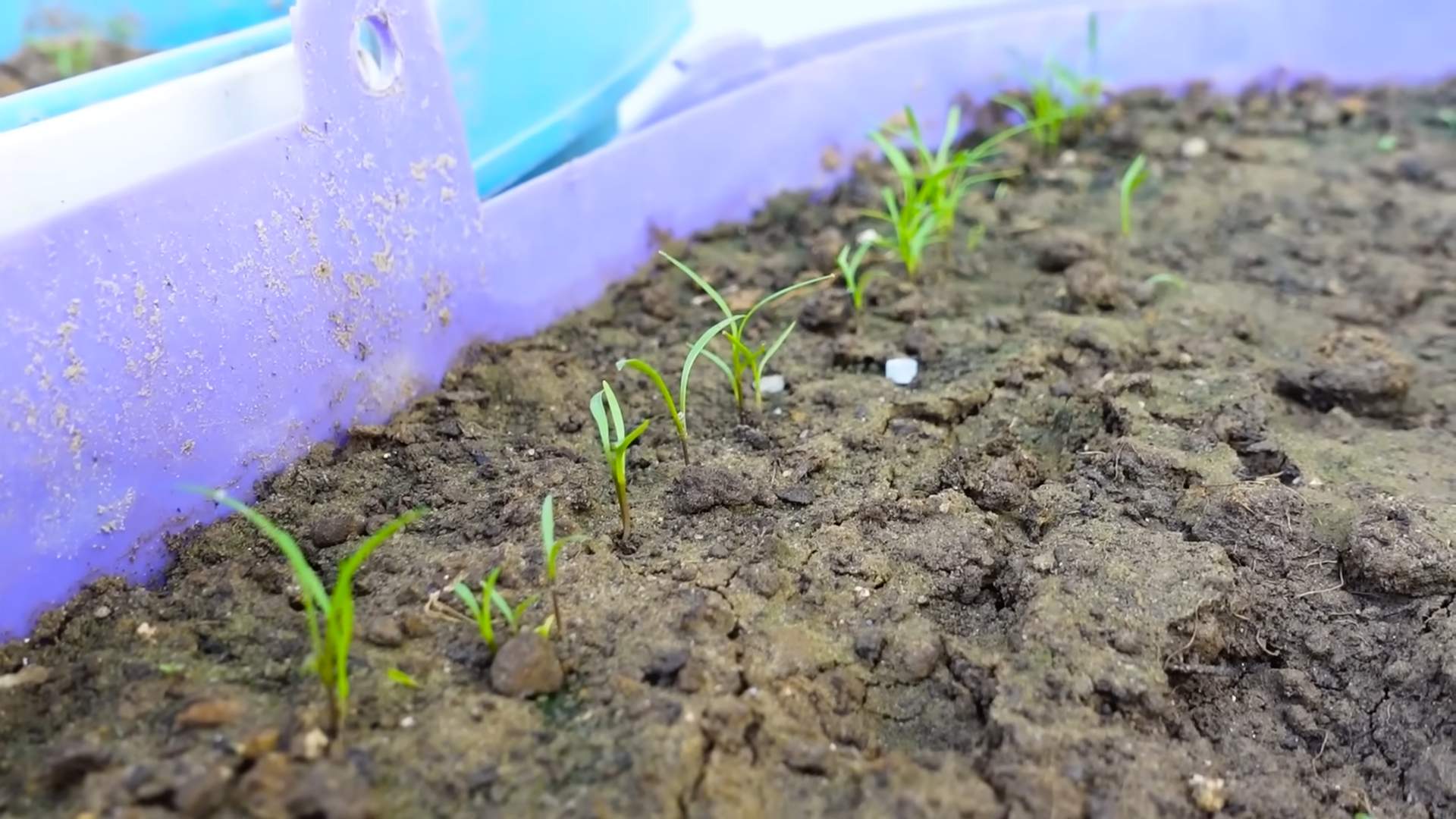
Conclusion
So, there you have it! Growing kale in bottles isn’t just a quirky gardening experiment; it’s a genuinely practical and rewarding way to cultivate fresh, nutritious greens, even if you’re short on space or dealing with less-than-ideal soil conditions. We’ve walked through the simple steps, from preparing your bottles to harvesting your bountiful kale.
Why is this DIY trick a must-try? Because it democratizes gardening. It breaks down the barriers that often prevent people from growing their own food. No sprawling garden? No problem! Limited sunlight? We’ve got solutions! Worried about pests? The bottle provides a degree of protection! Plus, let’s be honest, it’s incredibly satisfying to transform discarded plastic into a thriving mini-garden.
Beyond the basic method, there’s plenty of room for experimentation. Consider using different types of bottles – larger water cooler bottles can accommodate more kale plants, while smaller juice bottles are perfect for a single, compact specimen. You can also explore different kale varieties. Curly kale, Lacinato kale (also known as dinosaur kale), and Red Russian kale all thrive in bottle gardens. Each offers a unique flavor and texture, adding variety to your salads, smoothies, and cooked dishes.
For those looking to take their bottle gardening to the next level, think about incorporating a simple self-watering system. A wick made from cotton rope or felt, extending from a water reservoir at the bottom of the bottle to the soil above, can help maintain consistent moisture levels, especially during hot weather. You could also experiment with different soil amendments, such as compost or worm castings, to boost the nutrient content of your growing medium.
Don’t be afraid to get creative with the aesthetics, too! Paint your bottles with vibrant colors, decorate them with mosaic tiles, or even create a vertical garden by hanging multiple bottle planters on a wall or fence. The possibilities are endless!
But the real magic of this DIY project lies in its simplicity and accessibility. It’s a tangible way to connect with nature, reduce waste, and enjoy the unparalleled flavor of homegrown produce. And the best part? You’re contributing to a more sustainable lifestyle, one bottle of kale at a time.
We wholeheartedly encourage you to give this DIY trick a try. It’s a fun, educational, and ultimately delicious experience. And once you’ve harvested your first batch of bottle-grown kale, we’d love to hear about it! Share your photos, tips, and experiences in the comments below. Let’s build a community of bottle gardeners and inspire others to embrace the joy of growing their own food, one bottle at a time. Remember, even the smallest effort can make a big difference. So, grab a bottle, some soil, and some kale seeds, and get growing! You’ll be amazed at what you can achieve. Embrace the power of growing kale in bottles and transform your space into a miniature, edible oasis.
Frequently Asked Questions (FAQ)
What kind of kale is best for growing in bottles?
While most kale varieties will grow in bottles, some are better suited than others. Curly kale is a popular choice due to its compact size and resilience. Lacinato kale (dinosaur kale) also performs well, although it may require a slightly larger bottle. Red Russian kale is another excellent option, offering a beautiful color contrast and a slightly sweeter flavor. Experiment with different varieties to see which ones thrive best in your specific environment. Consider the mature size of the kale variety when selecting your bottle size. Dwarf varieties are particularly well-suited for smaller bottles.
How much sunlight does bottle-grown kale need?
Kale thrives in full sun, which means at least six hours of direct sunlight per day. However, it can also tolerate partial shade, especially during the hottest part of the day. If you’re growing your kale indoors, you may need to supplement with grow lights to ensure adequate light exposure. Observe your kale plants closely for signs of insufficient light, such as leggy growth or pale leaves. Rotate the bottles regularly to ensure that all sides of the plant receive equal sunlight.
What kind of soil should I use for growing kale in bottles?
Use a well-draining potting mix that is rich in organic matter. Avoid using garden soil, as it can be too heavy and may not drain properly in a bottle. You can amend your potting mix with compost, worm castings, or other organic fertilizers to provide essential nutrients to your kale plants. Ensure the soil is slightly acidic to neutral (pH 6.0-7.0) for optimal kale growth.
How often should I water my bottle-grown kale?
Water your kale plants regularly, keeping the soil consistently moist but not waterlogged. The frequency of watering will depend on the weather conditions, the size of the bottle, and the type of soil you’re using. Check the soil moisture level regularly by sticking your finger into the soil. If the top inch feels dry, it’s time to water. Avoid overwatering, as this can lead to root rot. Consider using a self-watering system to maintain consistent moisture levels.
How do I fertilize my bottle-grown kale?
Kale is a heavy feeder, so it’s important to fertilize your plants regularly. You can use a liquid fertilizer diluted to half strength every two to three weeks. Alternatively, you can incorporate slow-release fertilizer granules into the soil at planting time. Choose a fertilizer that is high in nitrogen, which promotes leafy growth. Avoid over-fertilizing, as this can burn the roots.
How do I protect my bottle-grown kale from pests?
The bottle itself provides a degree of protection from pests, but you may still encounter some issues. Common kale pests include aphids, cabbage worms, and flea beetles. Inspect your plants regularly for signs of infestation. You can remove aphids by hand or spray them with a strong stream of water. Cabbage worms can be picked off by hand or treated with Bacillus thuringiensis (Bt), a natural insecticide. Flea beetles can be controlled with insecticidal soap or neem oil.
When and how do I harvest my bottle-grown kale?
You can start harvesting kale leaves when they are about 4-6 inches long. Harvest the outer leaves first, leaving the inner leaves to continue growing. Avoid harvesting more than one-third of the plant at a time. You can harvest kale throughout the growing season, as long as the plant continues to produce new leaves. To harvest, simply cut the leaves off at the base of the stem with a sharp knife or scissors.
Can I grow kale in bottles indoors?
Yes, you can grow kale in bottles indoors, but you’ll need to provide adequate light. Place your bottles near a sunny window or supplement with grow lights. Indoor kale may require more frequent watering and fertilization than outdoor kale. Ensure good air circulation to prevent fungal diseases.
How do I overwinter my bottle-grown kale?
Kale is a cold-hardy plant and can often survive mild winters. However, if you live in an area with harsh winters, you may need to protect your bottle-grown kale. You can move the bottles indoors or cover them with a frost blanket. Avoid overwatering during the winter months.
What are some creative ways to use bottle-grown kale?
Bottle-grown kale can be used in a variety of dishes, including salads, smoothies, soups, and stir-fries. It can also be steamed, sautéed, or baked into kale chips. Add it to your favorite pasta dishes or use it as a topping for pizza. The possibilities are endless! Get creative and experiment with different recipes to find your favorite ways to enjoy your homegrown kale.

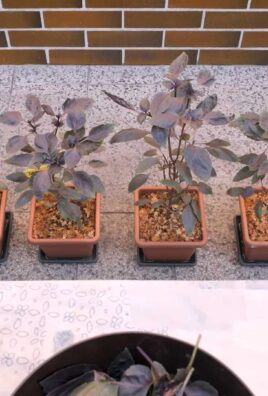
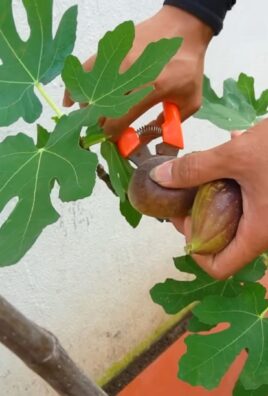
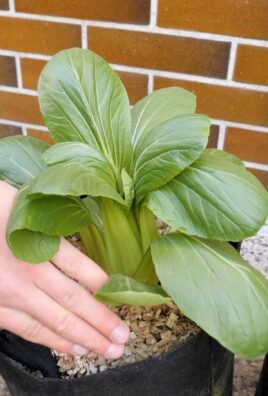
Leave a Comment